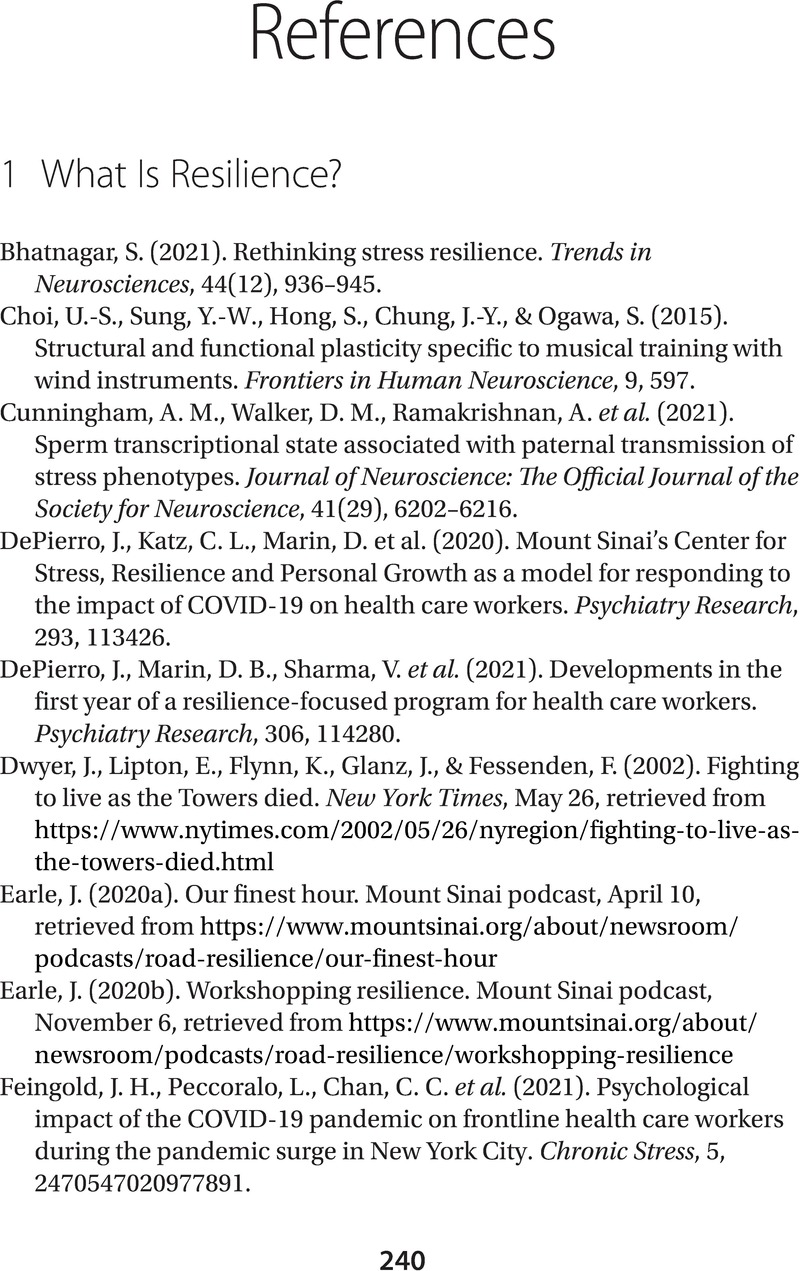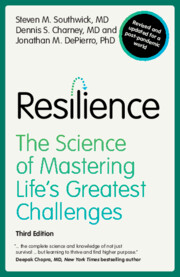Book contents
- Reviews
- Resilience
- Resılience
- Copyright page
- Contents
- Acknowledgments
- 1 What Is Resilience?
- 2 Optimism Belief in a Brighter Future
- 3 Face Your Fears
- 4 Moral Compass
- 5 Religion and Spirituality
- 6 Social Support
- 7 Role Models
- 8 Mind Your Body
- 9 Challenge Your Mind
- 10 Cognitive and Emotional Flexibility
- 11 Meaning, Purpose, and Growth
- 12 The Practice of Resilience
- Resilience Facing Death: A Tribute to Dr. Steven M. Southwick
- Abbreviations
- References
- Index
- References
References
Published online by Cambridge University Press: 01 August 2023
- Reviews
- Resilience
- Resılience
- Copyright page
- Contents
- Acknowledgments
- 1 What Is Resilience?
- 2 Optimism Belief in a Brighter Future
- 3 Face Your Fears
- 4 Moral Compass
- 5 Religion and Spirituality
- 6 Social Support
- 7 Role Models
- 8 Mind Your Body
- 9 Challenge Your Mind
- 10 Cognitive and Emotional Flexibility
- 11 Meaning, Purpose, and Growth
- 12 The Practice of Resilience
- Resilience Facing Death: A Tribute to Dr. Steven M. Southwick
- Abbreviations
- References
- Index
- References
Summary

Information
- Type
- Chapter
- Information
- ResilienceThe Science of Mastering Life's Greatest Challenges, pp. 240 - 256Publisher: Cambridge University PressPrint publication year: 2023
